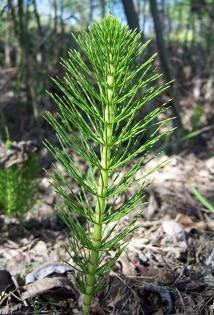
Fasciation Lew Feldman, Director Fasciation is a condition in which the tip of a shoot or flower, instead of producing a cylindrical axis that elongates, produces flattened, elongated and often contorted parts. This abnormal growth pattern is sometimes referred to as “crested.” An example at the Garden that intrigues visitors – from school children to adults…

Modern Rose Breeding Director Lewis Feldman The origins of modern-day roses can be traced to a complex series of hybridizations between seven to fifteen wild rose species, over three centuries. Two species in particular, Rosa gallica (European) and Rosa chinensis (Asian), figure prominently in the origins of modern-day domesticated cultivars of roses. The recent completion…

Root Pressure and the Flow of Sap Director Lew Feldman A Garden member recently wrote me seeking an explanation for the liquid (sap) dripping from the cut ends of her newly pruned ‘Roger’s Red’ grapevines. The dripping had continued for over a week and she wondered about the cause, and whether the loss of sap…

By Director Lew Feldman The UC Botanical Garden has a small but remarkable collection of Banksia species (12 of an estimated 183 different species), many of which are now flowering in the Garden’s Australasian Area. These plants are native to Australia and New Guinea where they range in size from prostrate shrubs to trees, up…

Bark and its Response to Environmental Fluctuations Director Lew Feldman Bark is the outer layer of most woody eudicot and gymnosperm trees that show an increase in stem (trunk) diameter. Because bark is directly exposed to the external environment, it often functions to mitigate the numerous environmental “insults” encountered by the plant. Indeed, the type…

Multicolor flowers–a pollinator training strategy Director Lew Feldman On a recent walk through the Garden I observed the multicolored flowers of marmalade bush (Streptosolen jamesonii), shown above in the South American area. This plant is fascinating in that the flowers change color after they have been pollinated. We now know that plants evolved multicolored flowers…

Don’t mistake this autumn crocus for saffron! By Dr. Lew Feldman One of the first signs of the arrival of autumn is the appearance of autumn crocus (Colchicum autumnale), growing in the medicinal plants section of the Herb Garden at the UC Botanical Garden. This beautiful flower originates from the corm of a European endemic…

Garden Director Lew Feldman Unlike pollen, which is released by the flower only once, nectar is a renewable resource, often replaced daily, especially in long-lived flowers such as puyas. It is unusually sweet, a fact not lost on the Garden’s resident squirrels! Nectar is the main floral reward for bees and birds, and while sweet…

Garden Director Lew Feldman The Garden’s Mather Redwood Grove is part of the California collection and contains over 450 coast redwoods (Sequoia sempervirens). Given that the trees in the Grove are planted so densely, I am often asked how the understory plants, such as Oxalis oregana (wood sorrel), are able to capture enough sunlight for…

Dr. Lew Feldman, Garden Director Horsetail (Equisetum telmateia) An invasive weed, but also useful in many ways! Horsetail (Equisetum telmateia) is found throughout the Garden, generally as an invasive, aggressive weed. But what truly distinguishes horsetail is that it is rich in the mineral silicon (silica), which contributes to cell wall rigidity and to the…
